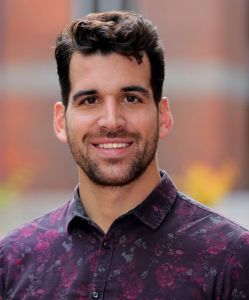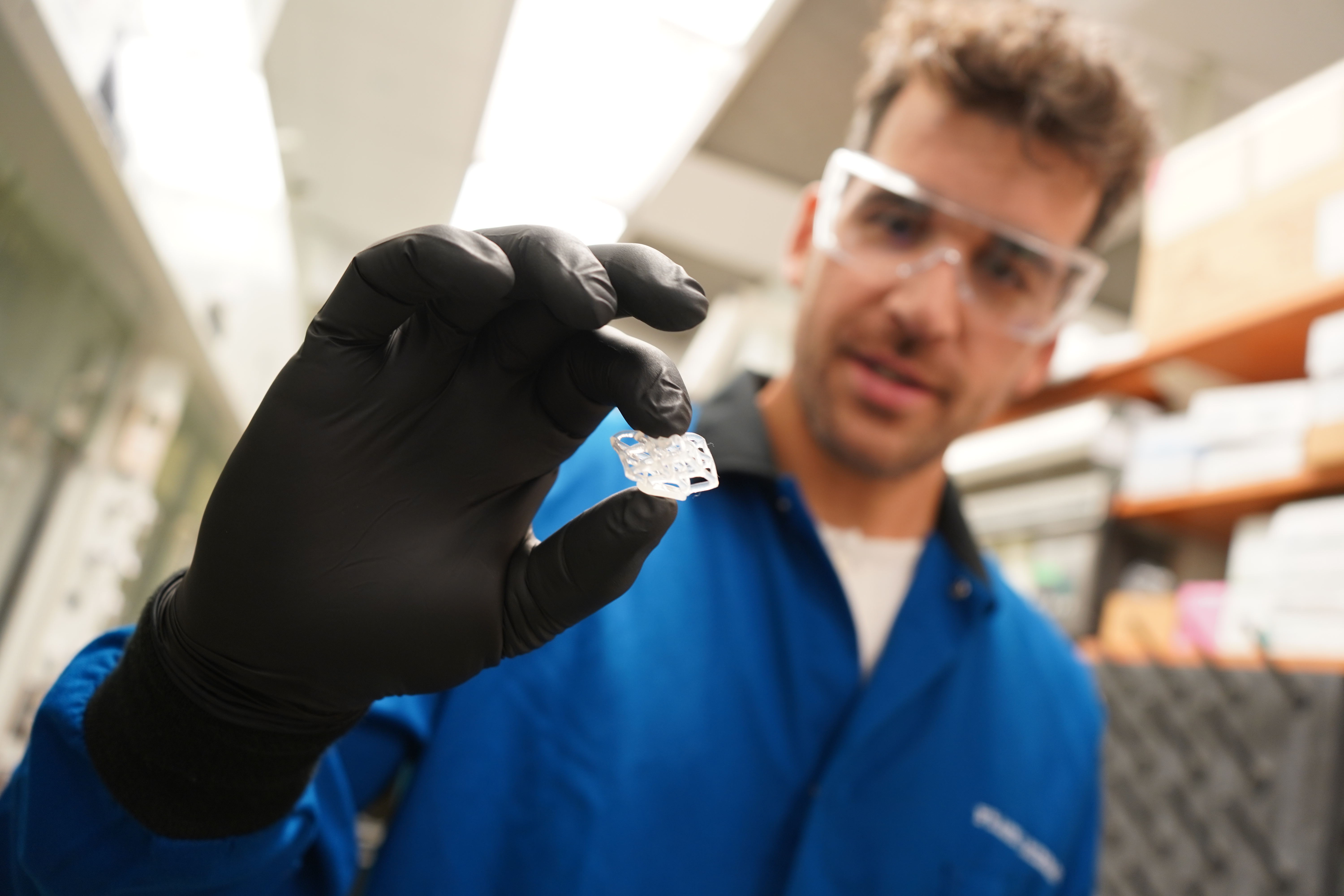September 23, 2025 | By Kirsten Heuring
Everyday items like car tires, plastic bags and foam cushions come from materials called polymers that can take years to develop and test. Researchers at Carnegie Mellon University and the University of North Carolina at Chapel Hill have developed a new approach to create better rubber-like materials more quickly by combining artificial intelligence with human expertise.
Typically when researchers make a material stronger, it becomes less flexible, while flexible materials tend to be weaker. To fix this problem, the team created a machine learning model that works in tandem with human chemists. Machine learning — a subset of AI research — involves teaching an artificial intelligence to perform a specific task. In one experiment, the researchers collaborated with the AI tool to create a polymer that is both strong and flexible.

“There are so many applications for polymers: construction, car parts, footwear, moldings, coatings,” said Olexandr (Oles) Isayev, Carl and Amy Jones Professor in Interdisciplinary Science. “Whenever you make one for a specific application, it needs certain properties, and it can’t usually withstand force and expand at the same time. These new materials have excellent properties. They can do both.”
The group input the properties it wanted in a polymer into the design tool. Then, the model suggested a series of experiments that UNC-Chapel Hill chemists conducted using automated science tools. The researchers tested the produced materials and provided feedback to the model, so it could make adjustments.
“The AI system suggests an experiment, and after the experiment’s been made, we measure the properties, and we iterate,” Isayev said. “You can dynamically adjust and help the machine navigate to find materials with the desired properties.”

Frank Leibfarth, professor of chemistry at UNC-Chapel Hill, said working in this new way was a breath of fresh air.
“In our human-augmented approach, we were interacting with the model, not just taking directions,” Leibfarth said. “This allowed us to combine the best aspects of human- and machine-guided processes to come to the optimal solution.”
Leibfarth also said he was excited for the potential applications for the polymer.
“Materials like this could be used in running shoes, medical devices like 3D printed dental implants, and durable parts for cars,” Leibfarth said.

“We’re at this really interesting time in chemistry and chemical engineering of finding out what’s the best strategy to go after the next great material,” said Dylan Anstine, a former postdoctoral fellow in Carnegie Mellon’s Department of Chemistry, who is now an assistant professor of chemical engineering and materials science at Michigan State University. “It’s clear that’s going to involve expert experimental chemists and expert computational chemists using the best data science tools we can. We were really teasing apart what that relationship looks like.”
The machine learning model also saved the researchers significant time and money by ruling out methods and chemicals that would not work. The researchers have made the program open source, so any lab can have access to this tool. If adopted in other labs, the tool could reduce the cost and time required for other discoveries.
This approach could accelerate the development of advanced materials for medical devices, footwear and electronics. By combining AI predictions with human expertise, the researchers hope they can solve complex materials challenges more effectively.
Anstine, Isayev and Leibfarth published “Design of Tough 3D Printable Elastomers with Human-in-the-Loop Reinforcement Learning” in Angewandte Chemie along with Carnegie Mellon graduate students Filipp Gusev and Filipp Nikitin as well as UNC-Chapel Hill researchers Johann Rapp, Kelly Yun, Meredith Borden and Vitall Bhat. Their work was funded by the Air Force Research Laboratory and the National Science Foundation.


